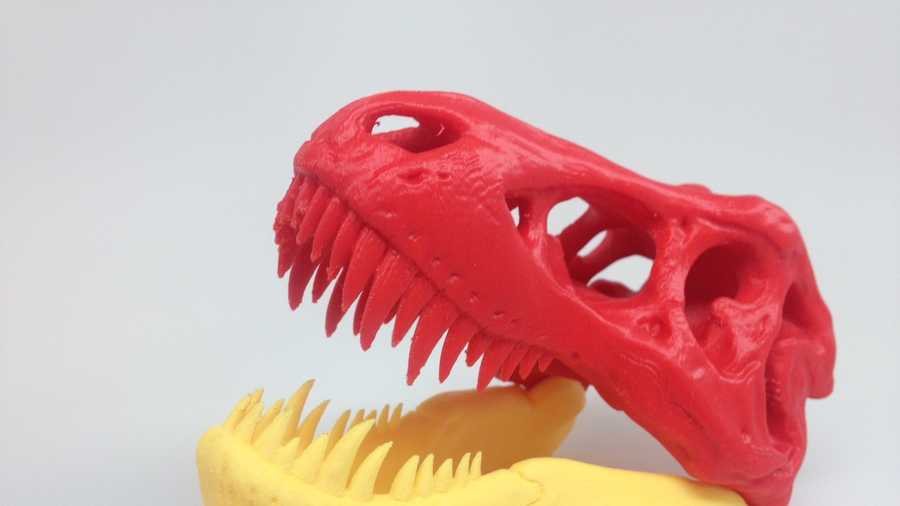It's happening in basement room at ISU's Science Hall

Iowa State geology students are learning through one of the fastest areas of technology.
Watch this story | View photos
In a corner room in the basement of Iowa State University's Science Hall, staff and students are using the printers to bring tiny worlds to life.
Franek Hasiuk's Geological Fabrication Lab specializes in 3-D scanning and printing of rocks.
“It’s really transforming the way that we’re understanding geology here at Iowa State,” Hasiuk said.
Hasiuk is an assistant geology professor at Iowa State, and he came up with the idea for his GeoFabLab when he noticed medical researchers were printing out their TC scans with 3-D printers.
“I said, holy cow, we need to be 3-D printing out our rocks,” he said.
"3-D printing is a great communication tool," Hasiuk said. "You don't have to teach someone a shape. You can understand by touching."
The lab is printing everything from models of Mars with its giant Olympus Mons volcano to showing the microscopic pores on rocks blown up into a scale people can see and hold.
A digitizer uses lasers to scan anything from fossils to rocks then it sends a file to the 3-D printer, which prints out plastic models.
For less than a dollar, the models are a lot more economical than the old wood hand carved models professors and students used to use in class.
“This is a really cheap alternative, which also allows us to give out numerous models out to a lot of students,” Joshua O’Brien said, a graduate student at Iowa State.
Now students can see the pores in rocks or the topography of the earth all in scale, and apparently they are more engaged than ever before.
“I can actually see what exactly the teacher is talking about and what we are learning about,” said student Artur Pacyga.
The GeoFabLab's products have gained the attention of the oil and gas industry, which is constantly working to understand fluid flow through the pores of rocks.

